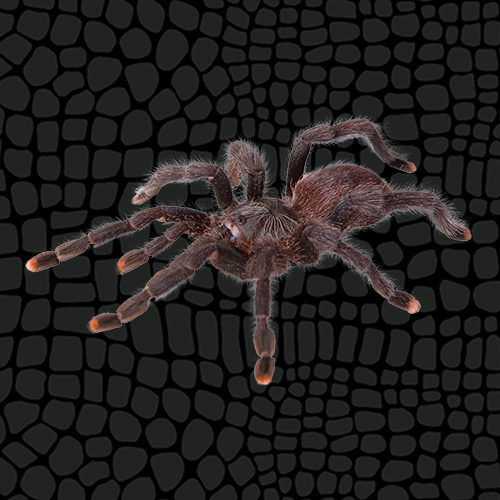Pink Toe Tarantula
Small, fast, and beautiful
Pink Toe Tarantulas are a group in the genus Avicularia and Caribena. Nearly all these tarantulas exhibit incredible blue, pink, purple, and red coloration, along with their signature pink toes. These beautiful arboreal jewels throughout northern South America and the southern Caribbean. They are a small to mid-sized tarantula that spends nearly all its time off the ground and prefers to build its web in the nooks and crannies of trees. These make a perfect species for beginners due to their more docile nature. They make amazing pets to interact with and observe. Pink toes rarely flick itchy hairs or bite, they are more prone to quickly run away from danger. Their docile nature does not mean they are slow. They are flighty and fast, so make sure when moving around them to make slow and smooth movements as to not scare them.
Habitat
These vibrant tarantulas have a native range from Costa Rica in Central America down to Brazil in South America and can also be found on southern Caribbean islands. They are a highly tropical species and inhabit trees in these tropical areas. They build their web nests in crevices of trees and between clumped branches or debris. When creating a habitat, remember to give your pink toe plenty of vertical climbing and hiding places. In the wild they are often hiding from predators.
Housing
Housing must be sealed and escape proof. For young tarantulas over 1.5” the Zilla Arboreal Micro Habitats are an easy, secure, and beautiful way to display these beautiful invertebrates. The Large Arboreal Micro Habitat will make a great home for your adult tarantula, but if you’d like to give them more room, the Zilla Front Opening Terrariums are another great option. The 12”x12”x20” would be plenty of space for your pet. Humidity is a key to keeping them healthy. Make sure to keep the terrarium humidity between 70-90%. Using tropical substrates, such as Zilla Jungle Mix, and adding Zilla Terrarium Moss on top of it and in crevices throughout the terrarium will help increase the humidity. Make sure to provide plenty of branches that extend to the top of the terrarium and try crossing a few of them to create anchoring areas for the tarantula to build its web. Also, make sure to provide a small water bowl with clean water they can drink from.
Temperature and Lighting
Within most of this tarantula’s habitat range the temperatures are between 60°F and 80°F year-round. This makes them easy to keep at home since they can live at the room temperature of most homes. If you need to add some heat, use an enclosure with a screen top and add a Zilla Day Blue 25w Mini Halogen Bulb in a Zilla Single Low Profile Fixture. While these tarantulas don’t need UVA/UVB to survive, it is highly beneficial to all living things. Add heat and UV lighting using the Zilla Dual Low Profile Fixture with the Zilla Day Blue 25w Mini Halogen Bulb and a Zilla Tropical Mini UVA/UVB Bulb.
Feeding / Diet
Wild tarantulas are opportunistic feeders and will prey on a variety of things from other invertebrates to small lizards and frogs. In captivity they eat a variety of invertebrates such as crickets and dubia roaches. Feeder insects should be fed a nutritional gut-load insect food and given Zilla Gut Load Cricket Drink. By feeding these products you will increase the nutritional value of your feeders and help pass important nutrients on to the tarantula. When feeding, spray the insects with Zilla Calcium Supplement and Zilla Vitamin Supplement 1-2 times weekly for additional calcium and vitamin D3, along with other essential nutrients.
Handling
Tarantulas can be handled, but it must be done carefully. While this species will tolerate occasional handling, it is easily scared. Even the feeling of your breath can startle it and cause your tarantula to run or jump. This can be catastrophic if the tarantula is held too high in the air and hits the ground. Falling from a height over 3 feet can cause their exoskeleton to rupture and is often fatal. While handling them, allow them to walk on and through your hands. Make sure you are close to the floor while handling and don’t handle for more than 5 minutes to prevent stress.
Also be sure to wash your hands after handling any animals.


